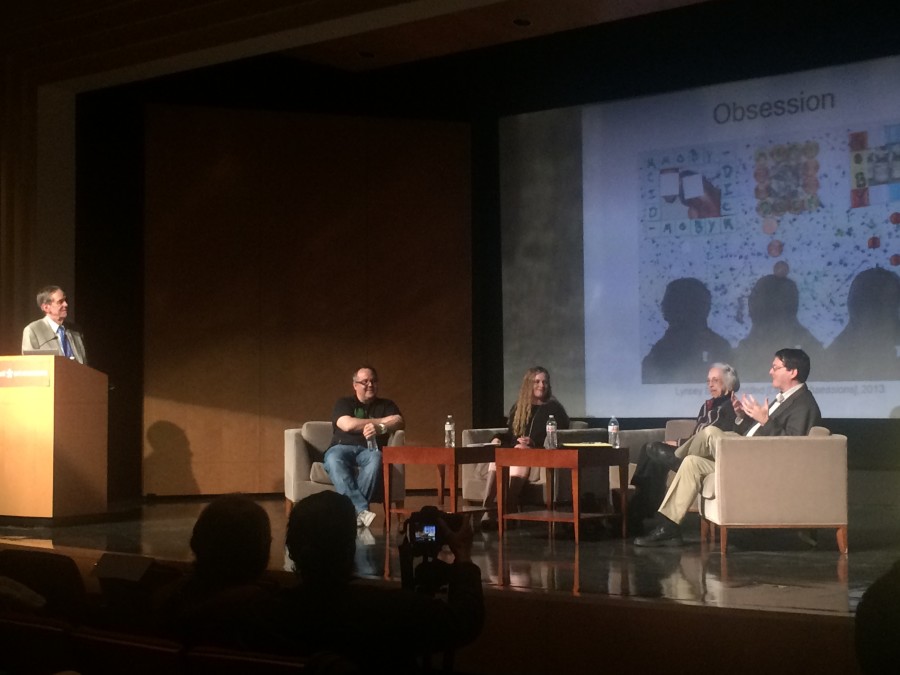‘Moby-Dick’ still speaks to todays culture
Panelist speak at an event held at the Cincinnati Art Museum on Friday April 24, 2015.
A symposium held Friday evening at the Cincinnati Art Museum addressed several questions about the famous tale “Moby-Dick” primarily focusing on how the 164 year old novel continues to speak today’s lessons even when it had trouble gaining attention in its beginning.
112 voices bounced around a Cincinnati Art Museum auditorium as laughter helped close Elizabeth Schultz’s discussion of “Moby-Dick” with a, “If you haven’t read it, I highly recommend it.”
The Fath Auditorium was a dedicated site for “‘Moby-Dick’: How a 19th Century Novel Speaks to the 21st Century,” where those 112 audience members joined co-curators, NKU professors Dr. Robert Wallace and Emma Rose Thompson, and panelists Matt Kish, a self taught artist that focuses on the Herman Melville novel, Samuel Otter, editor at Leviathan: A Journal of Melville Studies, and Elizabeth Schultz, author of unpainted to the last, a look into “Moby-Dick” and 20th century art.
Panelists touched on how Melville was ahead of his times in terms of racial inequality, environmental disasters caused by pursuit of oil, the white whale level obsession of capturing terrorists after 9/11, feminism and sexuality.
Kish, who received Superman comparisons from Dr. Wallace for his ability to be a librarian by day and an accomplished self taught artist by night, offered a unique perspective.
“I’m neither a scholar nor a researcher nor an academic,” Kish said. “I’m not the kind of person who recommends things. That can be dangerous…I thought maybe the best thing to do would be telling why I read this novel.”
Kish talked of his first encounter with “Moby-Dick”, seeing the 1956 film adaptation by accident while waiting for his father. From there he pursued the books, explaining it was easier to slow down and dissect a novel as opposed to a movie. he began physically and mentally consuming the physical copies, describing the post its and ripped pages and dog ears he would subject them to. Kish closed his time showing all the different iterations of the cover art next to the seemingly formulaic covers between today’s books, remarking, “In a sea of mediocrity and imitation, ‘Moby-Dick’ will always remain.”
Schultz, who’s unpublished manuscript for Unpainted to the Last wound up on Wallace’s desk years ago to determine if it was worthy of publication, called “Moby-Dick” the book everyone knew, but nobody read. Calling the book surprisingly funny, she said the reason it brought her back after 60 years of reading is the questions it makes her ask herself. “What is the meaning of life? How may I live the good life?”
The event continued into the weekend, where Kenton County Public Library is hosting a 9 a.m. to 9 p.m. marathon reading Saturday and Sunday, as well as a reception honoring the student artists Monday 5:30 p.m. to 7p.m. The library will continue to have the artwork on display thru May 15.
Wallace asked his audience to take part in the marathon reading.
“If you enjoy your time tonight, I hope you’ll become one of the 144 readers who takes us from ‘Call me Ishmael’ all the way to the end.”


